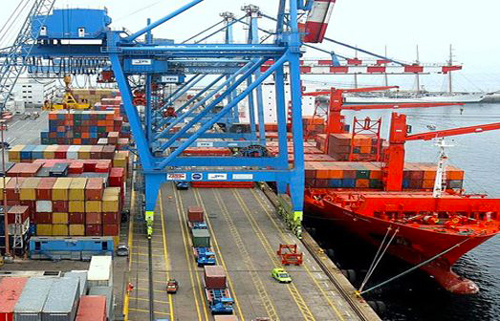The Diplomat
The good performance of exports, which reached 152,961 million euros up to June, reduced the trade deficit by 28.7 per cent in the first half of the year, according to data published yesterday by the Ministry of Industry, Trade and Tourism.
The figures show that exports grew by 23.3 per cent to 152.961 billion euros, while imports rose by 20.3 per cent to 158.358 billion euros, bringing the deficit to 5.397 billion.
With these figures, the coverage rate – the percentage of imports that can be paid for with exports – was 96.6 %, 2.3 percentage points higher than in the same period last year.
“In June, the recovery of Spanish foreign trade strengthened. Imports and exports increased notably compared to 2020 and also grew more moderately compared to 2019”, highlighted the State Secretary for Trade, Xiana Méndez.
Her department highlighted that the year-on-year growth of Spanish exports between January and June (+23.3%) was higher than that of Germany (+16.7%), France (+17.4%) and the United Kingdom (+9.4%), as well as that of the EU-27 (+18.2%). Outside Europe, foreign sales also grew in the United States (+23.3% year-on-year), China (+28.1%) and Japan (+23.2%).
All sectors increased their foreign sales compared to the first half of 2020 and by destination, exports to the European Union-27, which account for 61.8% of the total, rose by 26.1% year-on-year, while to non-EU destinations, where 38.2% of the total was directed, they rose by 18.9%.
By autonomous communities, the one that experienced the highest year-on-year rate of change in exports in the period was Madrid, with an increase of 34.7%, followed by Galicia, with an increase of 31%, and Castile-La Mancha, with a rise of 28.5%. In contrast, exports from the Canary Islands fell by 15.6 % year-on-year.
The Spanish Exporters and Investors Club considers the export figures for the first half of the year to be very positive, and pointed out that “they are proof that Spanish companies, as was already the case during the 2008 crisis, are seeing internationalisation as the formula for maintaining their sales and minimising the adverse effects that the pandemic has had on the domestic market”.
“As the published data indicate, imports have not yet recovered to pre-pandemic levels, which shows that domestic demand has not yet picked up. In fact, Spanish goods imports in the first half of 2021 are at the levels reached in 2018,” the Club points out, in a statement.
“As was already the case in 2008, Spanish companies are showing great maturity in jumping into international markets and overcoming the crisis,” says Antonio Bonet, president of the Exporters’ Club. “That is why it is so important for the government to promote measures to increase business competitiveness. I am referring, in particular, to improving business taxation, with special attention to international taxation, removing rigidities in the labour market and improving export financing,” he adds.
The club is concerned that the euro zone continues to be the main market for Spanish exports, increasing its relative importance in the first half of the year.
“The restrictions on international mobility that still persist may be at the root of this trend; in any case, we should be very attentive to this indicator, as the opportunities for greater business growth abroad, rather than in the euro zone or in Europe, will be in the coming years in the Asian regions and even in Africa, and the competitiveness factor is crucial to penetrate them,” said Antonio Bonet.







